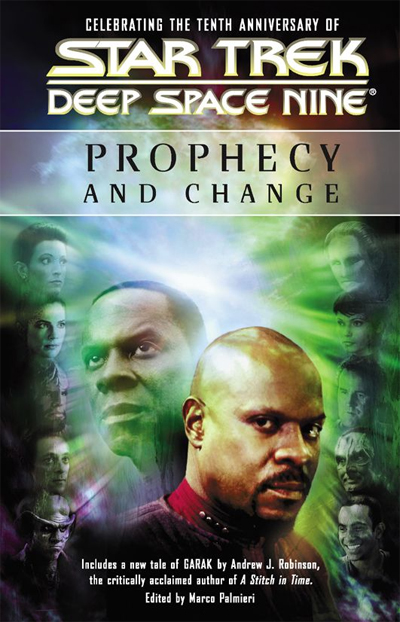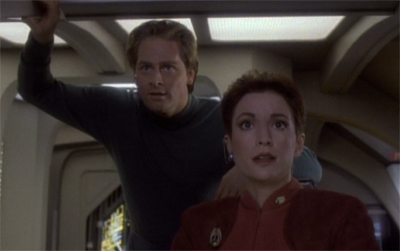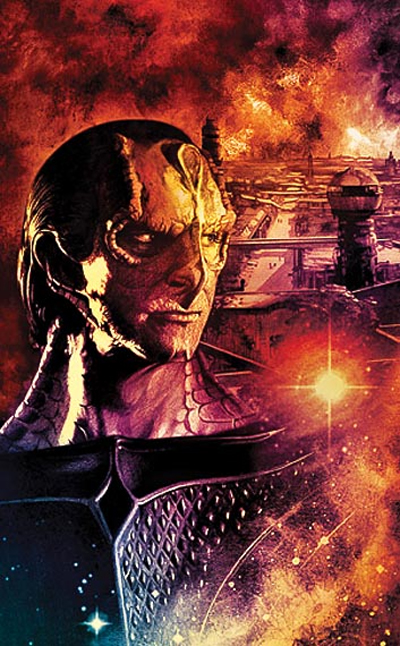Ending a television series is always a daunting proposition, even with ten episodes allocated to that purpose.
There are very few “perfect” television finales, very few final episodes that perfectly encapsulate everything that made a television series great. Indeed, many popular television series end with underwhelming finales. Some are even retroactively tarnished by this legacy; The Finale for Seinfeld, Daybreak for Battlestar Galactica, The End for Lost. To its credit, the Star Trek franchise arguably has one perfect finale with All Good Things…, the final episode of Star Trek: The Next Generation.

A touching conclusion…
It might have been greedy to ask for two such perfect finales, especially in such close proximity to one another. What You Leave Behind is not a perfect finale by any measure. It is clumsy in places, it makes bad choices in others. The audience can feel the budgetary constraints on the production team at certain points, and the time constraints on the writing team at others. Star Trek: Deep Space Nine does not end with a “perfect” two-part episode. It ends in a messy fashion.
Still, even if What You Leave Behind is not a perfect television finale, it is a good one. What You Leave Behind doesn’t do everything that it could do, but it does everything that it needs to. While clumsiness and awkwardness hold the episode back from perfection, they exist in such a way as to add to its charm. What You Leave Behind captures the spirit of Deep Space Nine, in its successes and its failures. What You Leave Behind is a finale that speaks to the core essence of its show, to its best and its worst selves in the same breath.

The big goodbye.
The result is a finale that feels satisfying and earned, despite its narrative miscalculations. What You Leave Behind is true to Deep Space Nine, and focuses primarily on trying to pay off seven years of character threads and two years of story. Its gravest mistakes are inherited, the result of decisions made more than a year earlier in episodes like Waltz or The Reckoning that were allowed to fester and grow over the following thirty-odd episodes. Even in its failures, What You Leave Behind is trying to do right by its story.
There is a large gulf in quality between All Good Things… and What You Leave Behind. However, that gap is smaller than the space that separates What You Leave Behind from Turnabout Intruder, Endgame or These Are the Voyages… For all its issues, there is something heartbreaking in What You Leave Behind. There is a sense that this is truly the end of the line, that things have changed and the world keeps right on spinning.

We all need a little space…
Filed under: Deep Space Nine | Tagged: closure, conclusion, continuity, Emissary, ending, Ira Steven Behr, resolution, star trek, star trek: deep space nine, the dominion war, what you leave behind | 15 Comments »




























